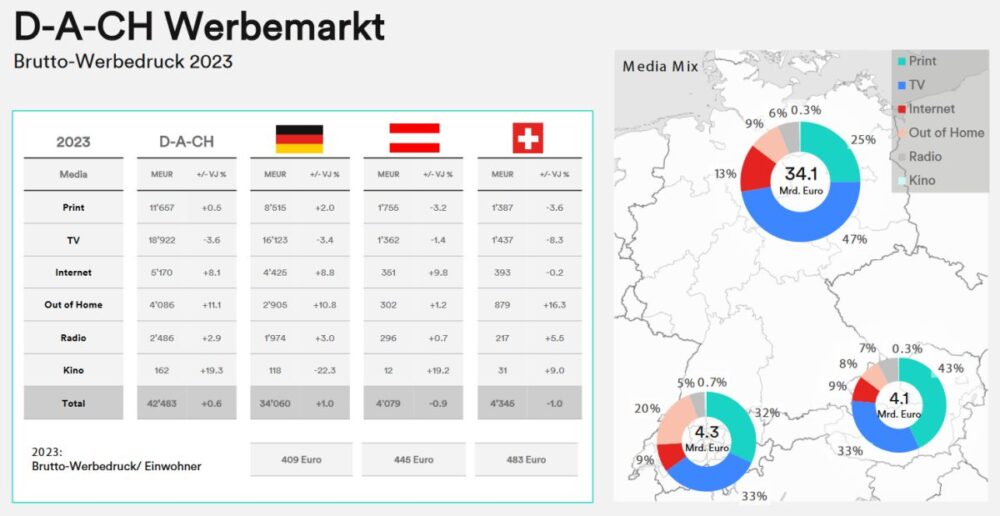Travel industry invests more and more in advertising
Tourism advertising spend will grow two to six times faster than the overall advertising market between 2021 and 2023. Tourism brands will increase their spending on digital advertising from 63 percent of budgets in 2020 to 70 percent in 2023, according to an advertising market forecast by Zenith.

As global travel begins to recover, travel suppliers must rebuild their relationships with consumers and adapt to the realities of Covid-19 travel. In the future, companies will reduce business travel in favor of remote meetings and favor sustainable, low-carbon travel - in no small part due to public pressure. Accordingly, the tourism industry will have to change its communication and focus on other target groups.
The travel industry advertising market was among the hardest hit by Covid-19. In 2020, it fell by almost half its value (46 percent), while the global advertising market as a whole shrank by only 4 percent. Zenith estimates that travel advertising spend fell from $18.0 billion in 2019 to $9.7 billion in 2020.
"Even in this country, travel industry ad spend is down a dramatic 22 percent in 2020," said Maria Brinkmann (pictured), managing director of Zenith in Switzerland. "This year, spending will increase by 9.3 percent, next year by 16.5 percent and in 2023 by another 8.1 percent. This means that next year we will already be almost back at the level of 2019."
Pent-up demand for travel will lead to rapid growth in travel ad spending in the coming years, but it will be a long road back to pre-pandemic levels in key markets. This year, travel advertising investment will still be 33 percent below 2019 levels, although the overall advertising market will grow 7 percent. It won't be until 2023 that the travel advertising market will exceed 2019 levels, reaching $19.6 billion.
The advertising market of the Swiss travel industry will also exceed the pre-pandemic level by an estimated CHF 20 million in 2023. It will then total 301 million Swiss francs.
Travel becomes a digital experience - and so does advertising
Advertisers in the travel industry are spending more on digital advertising than the average for all brands, 63 percent in 2020 compared to 58 percent on average. This is not surprising for a category that is way ahead of the market in digital transformation, with 32 percent of sales coming from e-commerce this year, compared to 20 percent for retail overall.
Digital travel advertising aims to target consumers in the early stages of research, such as through search engine advertising or display and video ads within relevant content. As travel planning becomes more digital, digital advertising will become even more important for both brand building and conversion. This includes integrating travel apps with vaccination certificates and using them to navigate local Corona rules, as well as offering digital concierge services.
Zenith forecasts that digital advertising spend by travel brands will increase 6 percent annually between 2019 and 2023. By 2023, travel brands will spend 70 percent of their budgets on digital advertising, an increase from 63 percent in 2020.
"The travel industry was one of the first sectors to embrace digitalization with the introduction of online booking," explains Brinkmann. "Corona accelerated this trend - even in 2020, advertising spend in the travel industry in Switzerland continued to grow by almost 18 percent in digital, while it slumped in all other media genres. This made digital advertising the most important communication channel for this industry last year, and this will not change in the coming years."
Travel providers look for new travelers in Asia and Eastern Europe
Zenith projects that the fastest growth in travel advertising will come from India and Russia, where travel ad spending will be 31 percent and 21 percent higher than the 2019 baseline, respectively, by 2023. Here, rising disposable incomes mean more people are traveling and previous travelers are traveling more frequently. The same applies to China and Poland, where advertising spend will increase by 16 percent and 14 percent respectively between 2019 and 2023.
The robust U.S. advertising market is driving up media prices, which is the main reason travel ad spending there will be 13 percent higher in 2023 than in 2019. Other saturated markets will range from +9 percent to -9 percent over that period, depending on consumer demand, media inflation, digital technology adoption and a variety of other reasons. In all markets, however, travel advertising's recovery from the 2020 slump will lag well behind overall market growth.
"As the travel industry begins to recover from the unprecedented decline in demand in 2020, brands are rebuilding their relationships with consumers and using digital technologies to guide them through every stage," said Jonathan Barnard, Head of Forecasting at Zenith. "Online video in particular will play a key role in connecting emotionally with consumers and inviting them to take the first step on their digital journey."
The 13 markets included in Zenith's report are Australia, Canada, China, France, Germany, India, Italy, Poland, Russia, Spain, Switzerland, the United Kingdom and the United States, which together account for 74 percent of total global advertising spend. The report covers domestic and international travel for business and leisure purposes.








